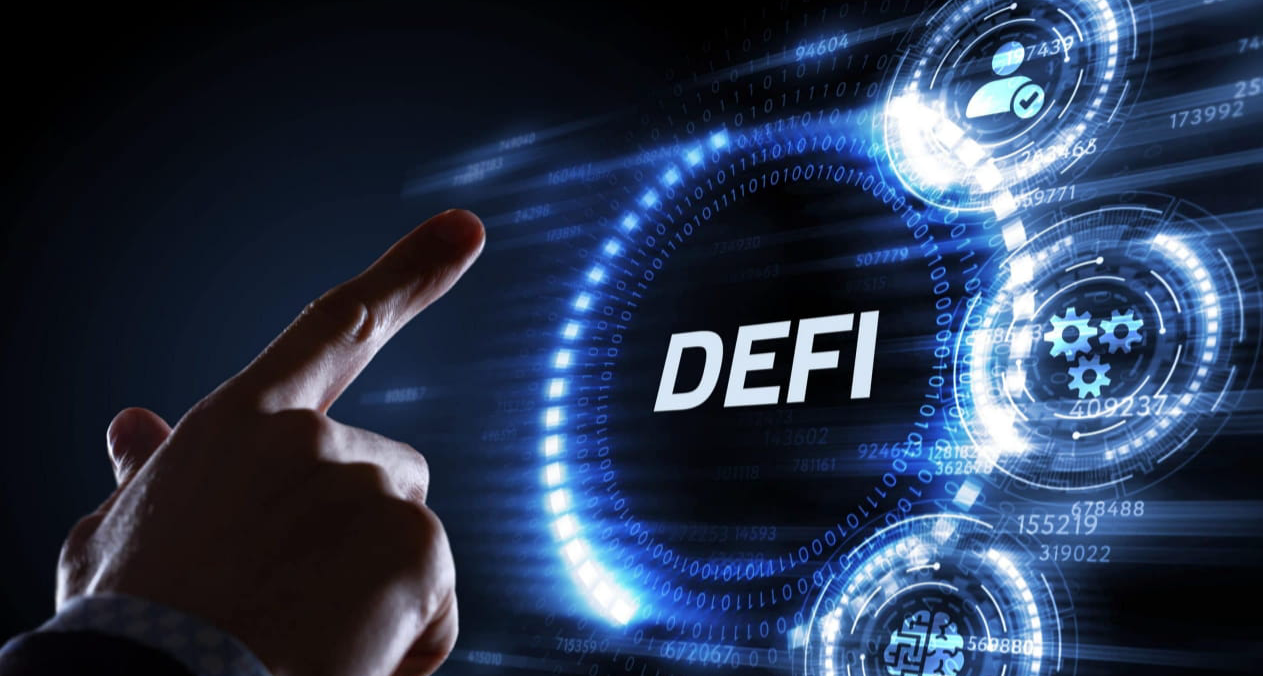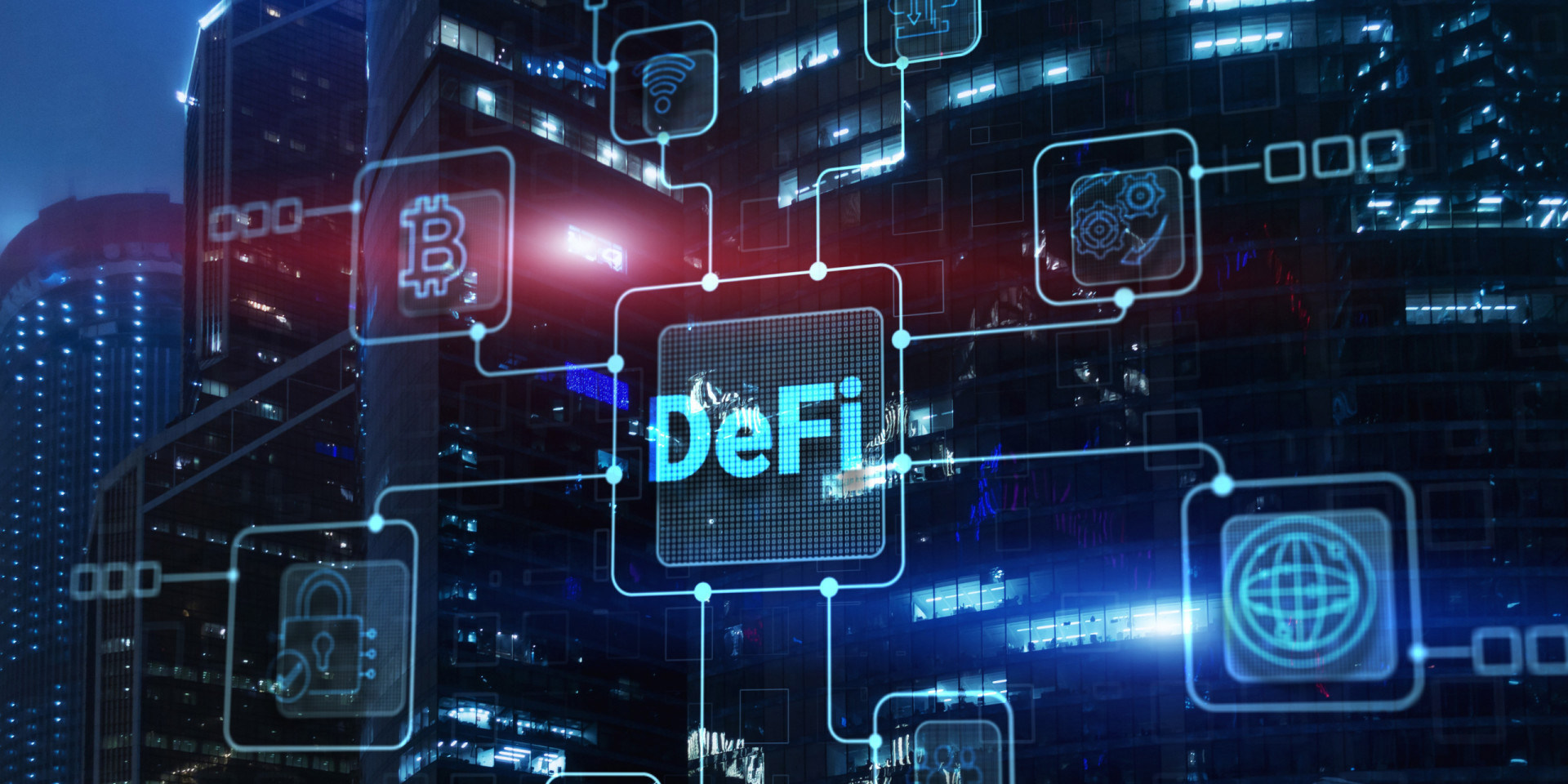Decentralised Finance, or DeFi, is one of the most important new ideas in blockchain and financial technology. DeFi is different from traditional banking since it doesn’t use banks, clearinghouses, or governments. Instead, it employs smart contracts written on public blockchains, mostly Ethereum, to offer financial services in a form that is open, clear, and independent. This change isn’t only about technology; it’s also about changing the way we think about how to make global finance more accessible, inclusive, and efficient.Decentralized Finance DeFi.
DeFi Smart Contract Mechanics
DeFi is a growing network of decentralised applications (dApps) that provide typical financial services, including lending, borrowing, trading, and insurance, without the need for middlemen. Users can use crypto wallets like MetaMask or Trust Wallet to connect with DeFi protocols directly, so they don’t need banks or brokers.
Smart contracts, which are self-executing codes that run on blockchains, are at the heart of DeFi. These contracts spell out the rules and conditions for transactions and carry them out automatically when those criteria are met. This creates a system of trustless automation, meaning that users do not need to rely on a persistent higher authority; they can verify anything on-chain in Decentralised Finance (DeFi). Decentralized Finance DeFi.
DeFi Scalability and Interoperability
Ethereum’s scaling problems, which led to high gas fees and transaction delays, significantly contributed to DeFi’s slow adoption in its early days. To fight this, the community has adopted Layer-2 solutions like Optimism, Arbitrum, and zkSync, which do calculations off-chain and then settle the final states on Ethereum.

Cross-chain bridges and interoperability protocols like Cosmos, Polkadot, and LayerZero also let DeFi apps work on more than one blockchain, which makes them more liquid and gives more people access to them. This future of omnichains shows a big change from isolated ecosystems to decentralised platforms that are connected to one another. V
Tokenizing Real World Assets
In 2025, a popular trend in DeFi is turning real-world assets into tokens. People can now invest in tokenised versions of real estate, bonds, and even invoices through projects like Centrifuge, Ondo Finance, and Maple Finance. This combination of on-chain liquidity and off-chain assets not only connects traditional finance with decentralised finance, but it also provides institutional investors with new legal ways to generate revenue in Decentralised Finance (DeFi).
AI Integration in DeFi
The application of artificial intelligence is changing how people use DeFi protocols. AI-powered portfolio managers like dHEDGE or Moralis AI assist customers in improving their yield farming tactics, rebalancing their risk, and finding strange behaviour on the blockchain. Institutions use AI for on-chain credit scoring, fraud detection, and compliance automation. These things help define what many people call “autonomous finance”.
DeFi Governance and Regulation
DAOs, or decentralised autonomous organisations, are changing the way DeFi is run. These groups let token holders vote on changes to the protocol, how the treasury is run, and policy changes. Advanced governance technologies such as quadratic voting, delegation, and multi-sig wallets ensure a decentralised yet organised decision-making process.
 Regulators are paying more attention as the ecosystem grows up. Countries like Switzerland and Singapore are creating regulatory sandboxes and legal DAO frameworks to make DeFi work with their own legal systems. Also, privacy-preserving KYC tools like zk-Pass and Polygon ID are helping DeFi stay compliant without giving up customer privacy. Decentralized Finance DeFi.
Regulators are paying more attention as the ecosystem grows up. Countries like Switzerland and Singapore are creating regulatory sandboxes and legal DAO frameworks to make DeFi work with their own legal systems. Also, privacy-preserving KYC tools like zk-Pass and Polygon ID are helping DeFi stay compliant without giving up customer privacy. Decentralized Finance DeFi.
DeFi Risks and Security
DeFi has a lot of potential, but it also has certain concerns. Users have lost billions of dollars because of vulnerabilities in smart contracts, hacks of governance, and rug pulls. To fix these problems, the community now stresses the importance of auditing, rigorous verification, and decentralised insurance protocols, like Nexus Mutual. These layers enable people to trust a system that doesn’t have any trust.
Future of DeFi Integration
DeFi’s future depends on its continuing integration with traditional banking, the metaverse, and machine learning algorithms. The convergence of these technologies is crucial. They make a strong and flexible infrastructure that can support a wide range of financial activities around the world without the need for middlemen. As more institutions become interested and the rules become clearer, DeFi is set to become not only a separate financial system but also a key part of the global economy. Decentralized Finance DeFi.
Final Thought
DeFi isn’t just a new way to use technology; it’s a whole new way of thinking about the financial system. DeFi gives people more control. People can now manage their assets, gain access to global financial instruments, and seize opportunities. That were only available to institutions by replacing centralised middlemen with networks. These networks exhibit openness, programmability, and decentralisation. New technologies such as AI, Layer-2 scalability, tokenisation of real-world assets, and regulatory changes propel the field’s growth and evolution. EFi is becoming safer, more accessible to everyone, and better prepared for institutions. pared for institutions.
Whether you’re a retail investor seeking passive income through yield farming or a developer developing. The next dApp, or an institution seeking decentralised exposure, is DeFi, which represents the forefront of technology and finance. The question is no longer whether DeFi will change the way money works in the future; it’s how quickly that future will become the standard.

